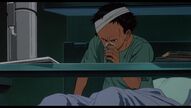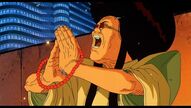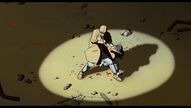The 1980s witnessed the rapid development of Japan's economy, and also heralded the crisis lurking behind the huge bubble. The ostensible illusion of prosperity reached its climax in 1989, when the Mitsubishi Group acquired 14 skyscrapers in New York's Rockefeller Center for 200 billion yen. In 1991, the economic bubble burst, and the Japanese economy experienced a major setback, entering the Heisei Great Depression that lasted for 20 years. "Akira" is adapted from the manga of the same name by Katsuhiro Otomo (serialized in "Weekly Young Magazine" from 1982 to 1990), the film tells a story of a disaster in a surreal space from a sci-fi perspective, and combines the history of Japan, The present and the future are connected and echoed, and it has become a realistic prediction.
Thanks to the illusion of the movie, Tokyo has experienced two destructions and rebirths, both due to energy explosions, and it seems to have entered a desperate cycle of "destruction-rebirth-destruction". Watching "Aguila" again in 2019, I was surprised by the advanced replication of reality in the film - almost the same urban space: pyramid-like skyscrapers, brightly lit and noisy; dark streets and alleys shaded by tall buildings, Dirty and dilapidated, snakes and rats are rampant; huge and complex underground space, muddy water, snow cellars. Tokyo, which is in the real world in 2019, made its debut in the 1988 movie, and even the Tokyo Olympics in 2020 were predicted. It can be seen that the boundaries between reality and illusion are so ambiguous that it is impossible to distinguish the establishment of the real world with reference to historical illusions. , or the high similarity between the two is purely coincidental.
Like the speeding motorcycles of the motorcyclists in the movie, the city is lost on the highway of modernization and "intoxicated" by the taillights of motorcycles. The back of the moon of urban expansion is the solidification of classes, the widening gap between the rich and the poor, increasing corruption, social unrest and other social problems. The elites represented by the government and consortium strategize at the top of the pyramid (in skyscrapers) to conduct human experiments to explore the ultimate energy; citizens and students at the bottom of the pyramid (streets and alleys) demonstrate against tax reform, and riots occur; the ultimate energy Akira was hidden under the construction of the Olympic stadium, a metaphor for the Japanese government's inflated desire to demonstrate its national strength and the danger of energy. The secret is hidden in the air and underground, but it is solved by the high school students who are orphans on the ground (headed by Jintian), the new source of energy is the experiment (Tiexiong), and it is also the experiment (No. 25, No. 26, No. 27) who saves mankind in the end. ), the film offers merciless satire and critique of adults and the institutions they build. Blind people are also ridiculed. Anti-government organizations are after all the pawns used by government officials to realize their personal desires and become victims; the townspeople turned to witches to wake up Akira in order to resist the government, completely disregarding the price of destruction; The Tie Xiong, after gaining super energy, turned into a bully, and even killed his companions, and eventually lost control and was swallowed by the energy. On the narrative level, the tendency to destroy the weak individuals after gaining energy echoes the country's blind worship of powerful forces and regardless of the cost, and ultimately points to loss of control.
Akira means "light" in Japanese, and in the movie light brings destruction, and hope and despair coexist. Otomo Keyo has insight into the truth of the false prosperity of the society, and presents his despair in the real world in a way of complete destruction.
postscript:
The production cost of "Aguila" is as high as 1.1 billion yen, and the screen, editing and music are all blockbuster-level standards. The director's movie obsession is undoubtedly revealed, such as the reappearance of multi-space urban landscapes like "Metropolis", the narrative prototype from "Frankenstein" - mad scientists and artificial experimental objects, the ninth wheel motorcycle in "Electronic World Warfare". After upgrading, it became Jintian's mount.
(Reproduced at http://www.macaodaily.com/html/2019-09/05/content_1379391.htm?fbclid=IwAR3lUU-MDcbg8nt9sOT5gyKfozcGFQ8vwXjpImBFs-8fX55ATBC15BjMvlU )
View more about Akira reviews










